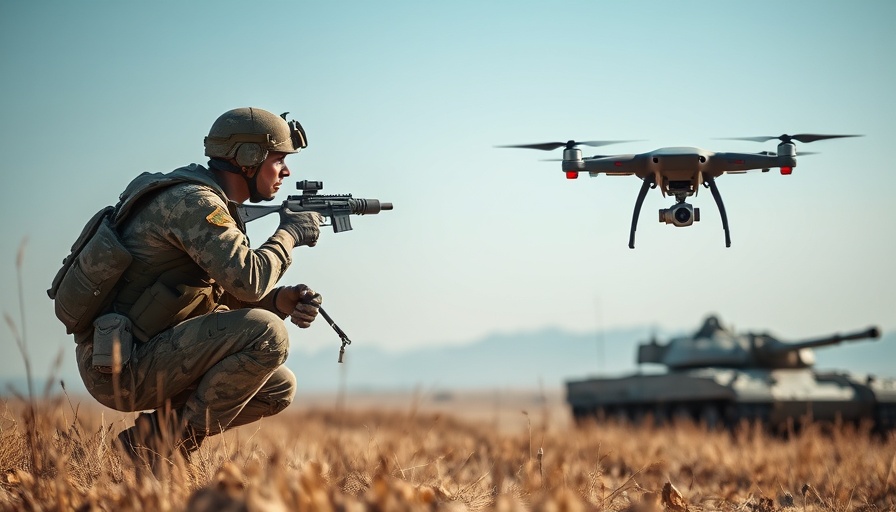
Increased Scrutiny on Unmanned Aircraft Systems
The U.S. House of Representatives has recently passed its version of the Fiscal Year 2026 National Defense Authorization Act (NDAA), which broadens the scope of regulations concerning foreign-made unmanned aircraft systems (UAS). This move signifies a growing concern over the security implications of integrating foreign technology into sensitive sectors of the national infrastructure. The updated language not only revises existing protocols from FY 2025 but also brings more specificity to the types of equipment and software needing scrutiny.
Understanding the FY 26 NDAA's Provisions
The NDAA serves as the foundational defense policy framework for the Department of Defense, establishing priorities that reflect current threats. The FY 25 NDAA introduced a significant amendment, mandating a national security review within a year for various communications and surveillance technologies crafted by foreign firms. The intent was clear: assess the risks associated with using technology from entities like DJI, the world’s largest drone manufacturer. The stakes have now risen with the FY 26 NDAA including specific references to UAS, marking a decisive shift towards evaluating the drones themselves along with the software used to operate them.
A Closer Look at the Changes
The House's FY 26 NDAA (H.R. 3838, Section 1723) expands upon the previous measures by explicitly requiring reviews for:
- UAS communications equipment and services.
- Integrated software tied to UAS from foreign sources.
- Equipment operating within the 5030–5091 MHz spectrum, again focusing on foreign development.
These additions highlight the increased emphasis on manufacturing and software dependencies on foreign entities. The section guarantees the same one-year deadline for these evaluations, which means that if a determination is not reached, relevant products and services will automatically be placed on the Federal Communications Commission’s (FCC) “Covered List.”
Implications for the Drone Industry and National Security
As policymakers are tightening regulations, professionals in the drone industry need to brace for potential limitations in the market. The fact that the FY 26 NDAA narrows its focus explicitly to UAS indicates that the government is not just concerned about the indirect risks posed by communication equipment but is actively addressing the operational vehicles and their respective software. This could significantly affect companies that rely on foreign suppliers, impacting the innovations or expansions they may have planned.
Two Critical Timelines to Navigate
With both NDAAs creating overlapping review periods, companies must be prepared for two back-to-back timelines. The FY 25 NDAA imposes a deadline of December 22, 2025, for its review outcomes. The FY 26 NDAA, if enacted, would establish a subsequent one-year period from its enactment date, potentially creating additional complexity as firms navigate the regulatory landscape.
Conclusion: Insights for Stakeholders
As the drone community continues to innovate and expand, understanding the implications of these legislative changes is crucial for all stakeholders involved—from hobbyists to industry professionals. Keeping abreast of these regulations not only helps to strategize for compliance but also positions businesses to adapt to a changing technological environment. The expansion of U.S. legislation concerning foreign technology reflects a broader vigilance regarding national security in an increasingly globalized world.
 Add Row
Add Row  Add
Add 




Write A Comment